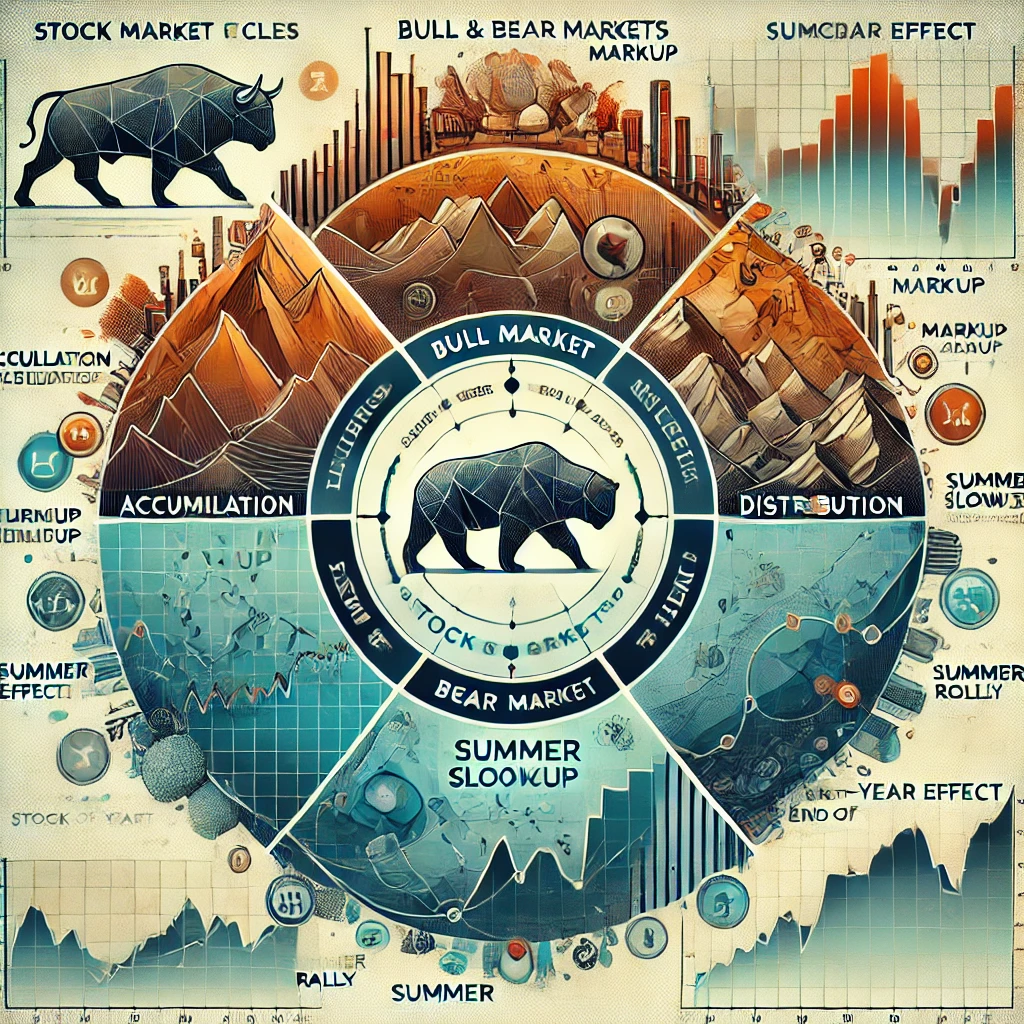When Markets Meet Meteorology: A Trading Tale

Ever wonder why your carefully planned trades sometimes feel as unpredictable as New York weather? I did too, after a friend’s question about market cycles sent me down a rabbit hole comparing a century of Central Park temperatures with stock market data. What I found might change how you think about trading patterns.
The Seductive Simplicity of Seasons
We all know the rhythm of New York’s seasons. Winter brings its bitter 40-degree days. Spring softens into pleasant 65-degree afternoons. Summer scorches at 85, and fall cools things down to a comfortable 70. Simple stuff, right?
Not so fast.
This is where things get interesting – and where markets and meteorology start telling the same story. Just like that “typical” spring day that ambushes you with snow in April, those reliable market patterns have a nasty habit of leaving traders out in the cold.
The Daily Dance
Picture yourself walking to work on a spring morning in Manhattan. You dress for the forecast, but by lunch, the temperature has jumped 20 degrees, and you’re sweating in your jacket. Sound familiar? It’s exactly what happens in the markets. That crystal-clear pattern you spotted at the opening bell can completely flip by lunch. Those neat averages we love to quote? They’re hiding the daily chaos that actually determines whether you make or lose money.
The City That Never Sweats the Details
Here’s something fascinating: New York City creates its own weather. All that concrete, steel, and human activity turns the city into a heat island, warmer than its surroundings. Markets work the same way. Trading volume and investor psychology create their own ecosystem that often ignores seasonal “rules.” Just as a city dweller can’t rely on regional weather forecasts, traders can’t bank on broad market patterns.
Beyond the Basic Patterns
Think about how many factors affect your daily weather experience. It’s not just temperature – it’s humidity, wind chill, cloud cover, and that weird microclimate between skyscrapers. Markets are just as complex. Price averages hide violent intraday swings. Global events ripple through trading floors. Sector-specific trends buck broader patterns. And sometimes, just like a freak storm, black swan events throw everything into chaos.
The Smart Player’s Game
So what’s a trader to do? Take a lesson from seasoned New Yorkers. They don’t just check the morning forecast and hope for the best. They’ve learned to:
• Watch multiple indicators (not just the temperature)
• Keep an umbrella handy (always have a backup plan)
• Trust their experience over averages
• Stay flexible when conditions change
The Real Truth About Patterns
Here’s what nobody tells you in Trading 101: Markets, like weather, are living, breathing systems. They have patterns, sure, but they’re more like jazz than classical music – there’s structure, but the magic happens in the improvisation.
The best traders, like the best meteorologists, know that historical patterns are just one instrument in their orchestra. They respect the complexity. They prepare for surprises. And most importantly, they never forget that the only predictable thing about markets is their unpredictability.
Remember this: Market cycles aren’t a crystal ball – they’re more like a weather vane. They’ll tell you which way the wind is blowing, but you still need to know how to sail your ship.
The real edge in trading isn’t in finding perfect patterns. It’s in understanding how market dynamics work from the inside out. External factors will always throw their curveballs, but if you grasp the internal mechanics, you’ll weather any storm the market sends your way.

